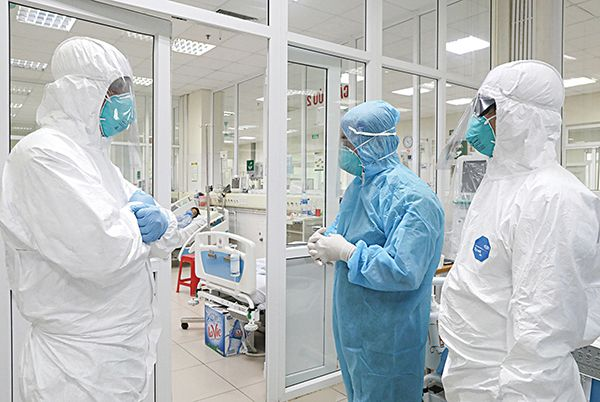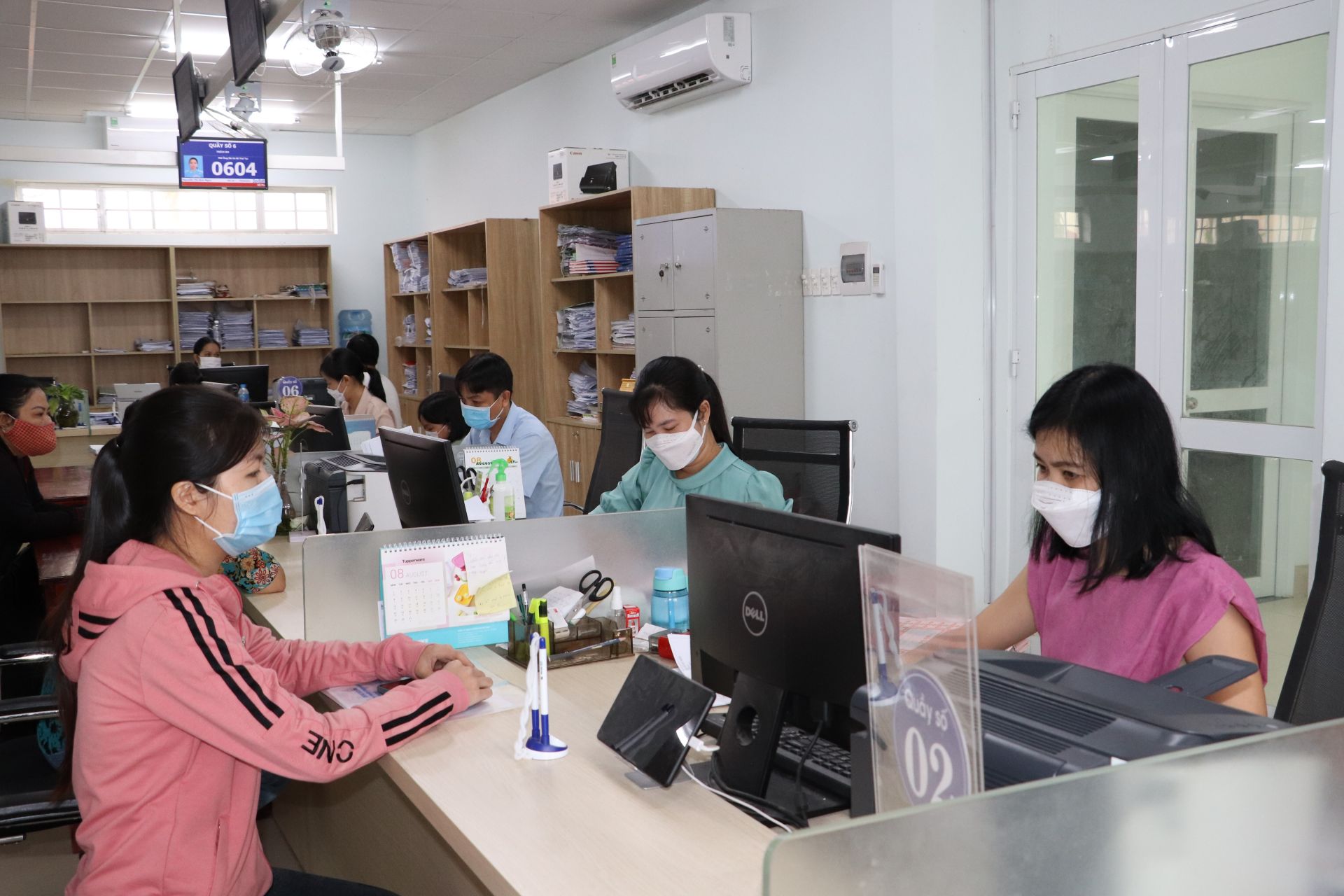Antiviral drugs used in COVID-19 treatment in Vietnam
What are the antiviral drugs used in COVID-19 treatment in Vietnam? – Hong Man (Ca Mau)

Antiviral drugs used in COVID-19 treatment in Vietnam (Internet image)
Antiviral drugs used in COVID-19 treatment in Vietnam
Content mentioned in Decision 2671/QD-BYT 2023 on guidelines for diagnosis and treatment of COVID-19 in Vietnam.
Antiviral drugs used in COVID-19 treatment in Vietnam include:
|
Substance |
Indications |
Contraindications |
Dosage |
Note |
|
Remdesivir |
- Inpatient, mild severity and at least one risk factor for severe progression; moderate and severe, disease onset less than 10 days with respiratory failure requiring oxygen, HFNC, non-invasive mechanical ventilation - Combined with corticosteroids when the disease is moderate or higher (preferably dexamethasone). - For cases that have been treated with remdesivir before invasive ventilation or ECMO, remdesivir can be continued for a full course. |
History of hypersensitivity to any ingredient in the formulation |
+ People ≥ 12 years old and weighing > 40kg: 200mg on the first day, 100mg/day after that, 1 time intravenous infusion for 30 - 120 minutes. + Children ≥ 28 days old or ≥ 3.0 kg to < 40 kg: the first days 5mg/kg, the following days 2.5mg/kg/day IV once in 30 - 120 minutes + Duration of treatment: 5 days, if there is no clinical improvement, treatment can be continued for another 5 days. |
- PNCT and breastfeeding: There are no complete data. Not recommended unless benefits outweigh risks. - Monitor patients during infusion and within 1 h after infusion to detect and promptly handle anaphylaxis and infusion reactions (if any). - Monitor liver enzyme elevation during drug use. Discontinue use if ALT rises above 5 times upper limit of normal during treatment - Note that the patient has an estimated glomerular filtration rate (eGFR < 30mL/min) - For more detailed information about the drug, follow the instructions for use of the drug |
|
Nirmatrelvir in combination with Ritonavir |
- People with COVID-19 patients, adults and children 12 years of age and older who weigh at least 40 kg, are mild and moderate and have at least 1 high risk of developing severe disease (including hospitalization and death). . Use within 5 days of onset of symptoms or positive test |
- Dosage: + Glomerular filtration rate eGFR ≥ 60 mL/min: 300 mg of nirmatrelvir (2 tablets of 150 mg) orally with 100 mg of ritonavir (1 tablet of 100 mg), x 2 times/day. - Treatment time: 05 days. + Glomerular filtration rate eGFR ≥ 30 to 60 mL/min: 150 mg nirmatrelvir (1 150 mg tablet) orally with 100 mg ritonavir (1 100 mg tablet), twice daily. + If eGFR < 30 mL/min or severe hepatic impairment (Child-Pugh C): not recommended |
- For more detailed information about the drug, follow the instructions for use of the drug Watch out for serious drug interactions or contraindications through inhibition of CYP3A4 . - Not recommended for use in patients with severe liver or kidney failure |
|
|
Molnupiravir |
Patients ≥ 18 years of age with mild or moderate COVID-19 but at risk of becoming severe; and within 5 days of symptom onset or positive test |
Pregnant |
Take 800mg/time x 2 times/day (every 12 hours) x 5 days |
Female patients should exclude pregnancy before use. When taking the drug: For female patients, ensure that effective contraception is used from the time of use until 4 days after the last dose; For male patients, it is important to ensure that effective contraception is used from the start of treatment until 3 months after the last dose. |
Conspectus of Covid-19
Corona viruses (CoV) are a large family of RNA viruses that can cause disease in both animals and humans. In humans, Coronaviruses can cause a wide range of illnesses, from the common cold to serious illnesses such as Severe Acute Respiratory Syndrome (SARS-CoV) in 2002 and Middle East Respiratory Syndrome (MERS-CoV) in 2012.
Since December 2019, a new strain of coronavirus (SARS-CoV-2) has been identified as the cause of the acute respiratory infection (COVID-19) epidemic in Wuhan city (Hubei province, China), which then spread to the whole world, causing a global pandemic. Since then, the virus has also mutated to create many different variants.
SARS-CoV-2 is transmitted directly from person to person through inhalation (primarily through droplets) and contact with contaminated objects. SARS-CoV-2 is also capable of being transmitted through aerosols. In addition, aerosols are produced in closed, crowded, and poorly ventilated spaces or where there is a lot of aerosol production, such as in treatment facilities.
People with COVID-19 can shed the virus from 2 days before the first symptoms, and shedding is strongest during the first 3 days from the time of symptoms. The shedding time of the infectious virus is about 8 days from the onset of symptoms, but may be longer in immunocompromised patients. However, asymptomatic people can still spread the virus that causes infection.
The spectrum of COVID-19 disease ranges from asymptomatic people infected with mild symptoms to severe illnesses such as severe pneumonia, acute respiratory distress syndrome (ARDS), sepsis, multi-organ failure, and death. The elderly, people with chronic diseases or immunodeficiency, or those who have co-infections or superinfections with other causes such as bacteria and fungi are at greater risk of severe disease.
The main preventive measures are vaccination, early detection to isolate cases, and infection control.
For more information, see the guidelines for the diagnosis and treatment of COVID-19 at Decision 2671/QD-BYT.
Duong Chau Thanh
- Key word:
- COVID-19 treatment
- in Vietnam
- Number of deputy directors of departments in Vietnam in accordance with Decree 45/2025/ND-CP
- Cases ineligible for pardon in Vietnam in 2025
- Decree 50/2025 amending Decree 151/2017 on the management of public assets in Vietnam
- Circular 07/2025 amending Circular 02/2022 on the Law on Environmental Protection in Vietnam
- Adjustment to the organizational structure of the Ministry of Health of Vietnam: Certain agencies are no longer listed in the organizational structure
- Vietnam aims to welcome 22-23 million international tourists in Vietnam in 2025
-

- Emergency response and search and rescue organizations ...
- 10:29, 11/09/2024
-

- Handling of the acceptance results of ministerial ...
- 09:30, 11/09/2024
-

- Guidance on unexploded ordnance investigation ...
- 18:30, 09/09/2024
-

- Sources of the National database on construction ...
- 16:37, 09/09/2024
-

- General regulations on the implementation of administrative ...
- 11:30, 09/09/2024
-

- Notable new policies of Vietnam effective as of ...
- 16:26, 11/04/2025
-
.Medium.png)
- Notable documents of Vietnam in the previous week ...
- 16:21, 11/04/2025
-
.Medium.png)
- Notable documents of Vietnam in the previous week ...
- 16:11, 02/04/2025
-
.Medium.png)
- Notable new policies of Vietnam to be effective ...
- 16:04, 02/04/2025
-
.Medium.png)
- Notable new policies of Vietnam effective from ...
- 14:51, 21/03/2025

 Article table of contents
Article table of contents
